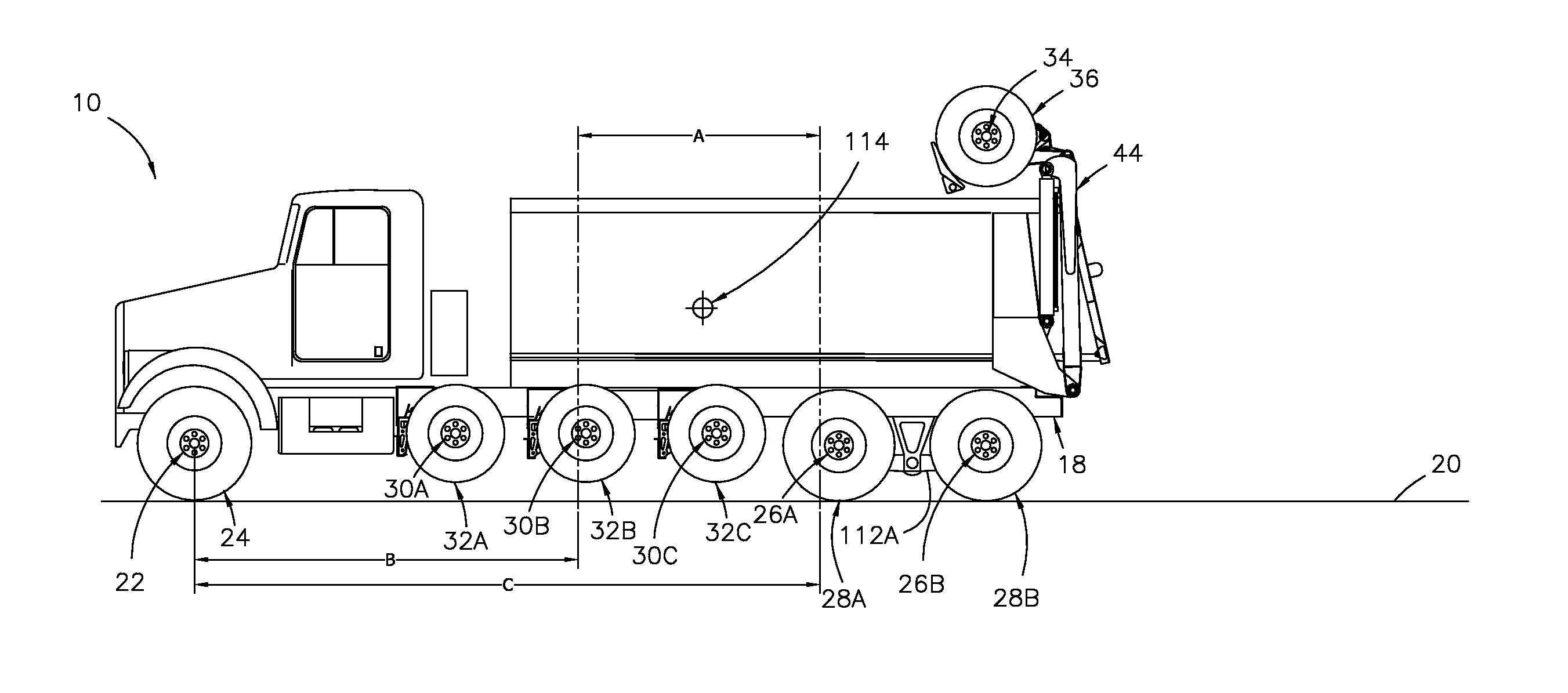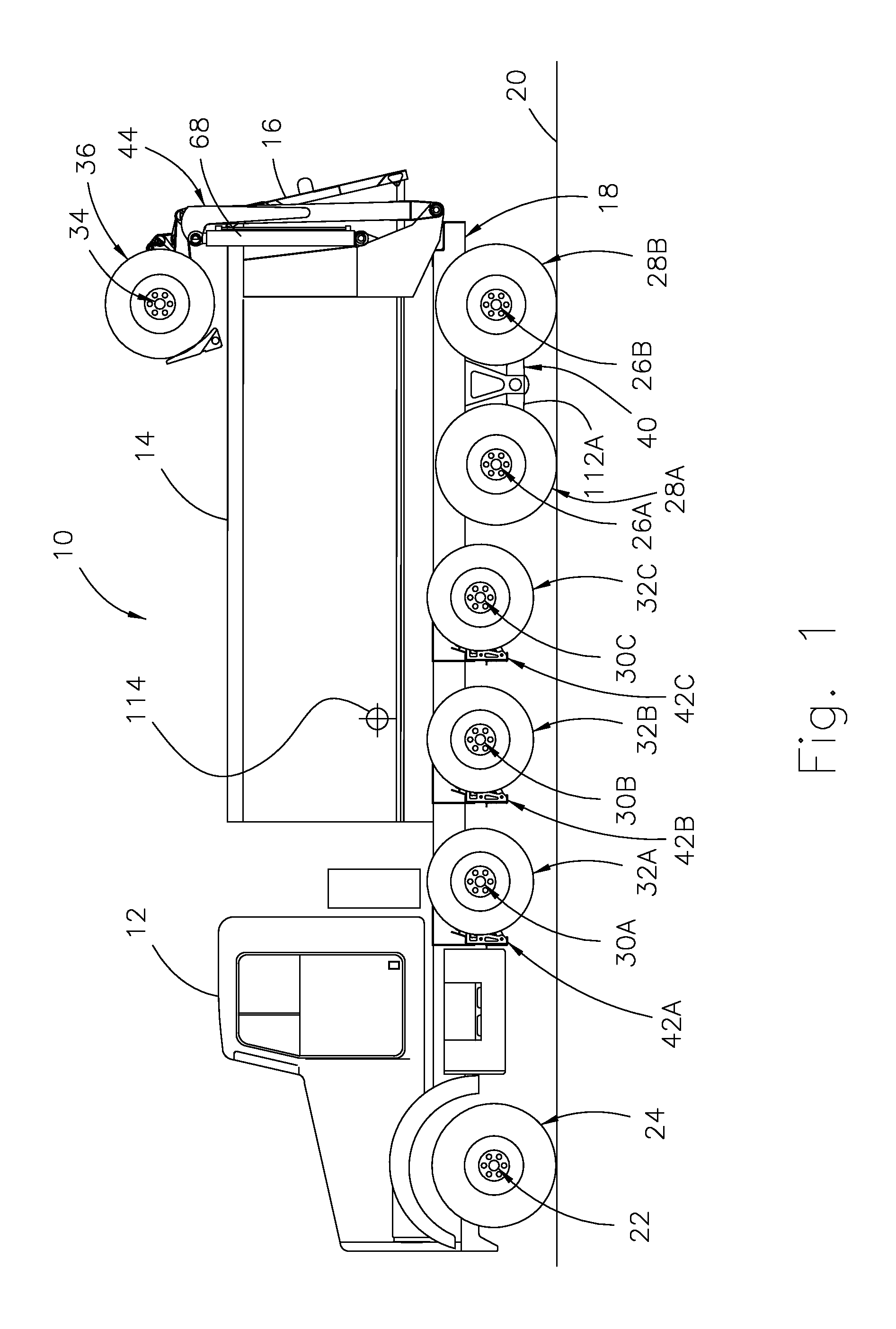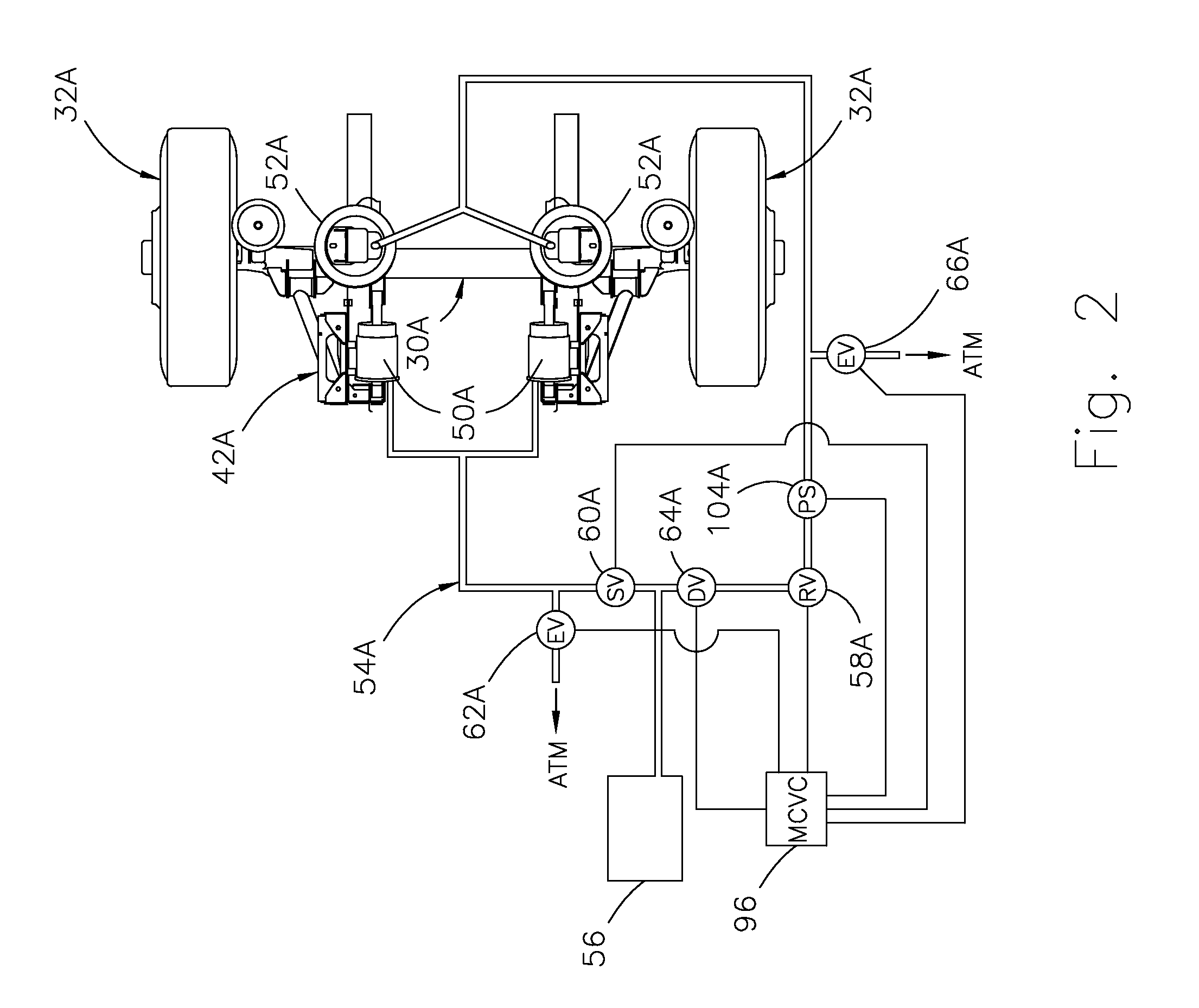Axle Load Monitoring System
- Summary
- Abstract
- Description
- Claims
- Application Information
AI Technical Summary
Benefits of technology
Problems solved by technology
Method used
Image
Examples
Embodiment Construction
[0036]Referring to FIGS. 1-19, the present invention is disclosed as applied to a load-transporting motor vehicle in the form of a dump truck 10 having a cab 12 that serves as a vehicle operator and passenger compartment and a tiltable dump body 14 that serves as a load container and has a tail gate 16 for releasing a load when the dump body is tilted. With the cab and tiltable dump body mounted on a chassis 18 and the chassis in turn supported on a road surface 20 by both primary axles and deployable auxiliary axles. With the primary axles consisting of a forwardly-located axle 22 with steerable wheels 24 and rearwardly-located powered tandem axles 26A and 26B with dual wheels 28A and 28B respectively at their outboard ends. And with the auxiliary axles consisting of three pusher axles 30A, 30B and 30C with wheels 32A, 32B and 32C respectively, and a trailing axle 34 with wheels 36.
[0037]And to aid in understanding the important role that the axle load monitoring system according t...
PUM
 Login to View More
Login to View More Abstract
Description
Claims
Application Information
 Login to View More
Login to View More - R&D
- Intellectual Property
- Life Sciences
- Materials
- Tech Scout
- Unparalleled Data Quality
- Higher Quality Content
- 60% Fewer Hallucinations
Browse by: Latest US Patents, China's latest patents, Technical Efficacy Thesaurus, Application Domain, Technology Topic, Popular Technical Reports.
© 2025 PatSnap. All rights reserved.Legal|Privacy policy|Modern Slavery Act Transparency Statement|Sitemap|About US| Contact US: help@patsnap.com



